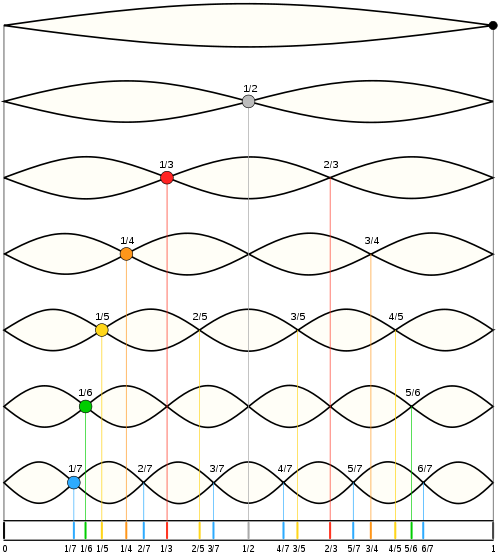All woodwind, brass instruments as well as (equal tempered)electric and acoustic pianos and fretted guitars all have intonation problems. There isnt really a debate about this...only about how bad they are and how to correct them. I consider all of these corrections imperfections or improper cheats resulting in a change in timbre and the overtones as a result.
embouchure (mouth shape) changes can be used on brass instruments and single reeds (sax and clarinet) to bend the pitch up and down.
rolling the tone hole of flutes up or down changes the air direction and pitch up and down.
finger shading is covering up only part of a tone hole to lower the pitch(like flute and sax)
So what's wrong with brand new professional instruments that modern acoustic physicists still have to correct?
Only our entire system of music for the last 200 years....... nothing.
And.
The devil that is equal temperament.
What is equal temperament? out of tune 11/12ths of the time in all keys equally(good for modulation)
what is just intonation? perfectly in tune. in one" key"
what is in tune? the answer is ... in tune compared to what?
Our partially defunct system of 12 tones per octave is where we get the true "close enough for jazz" {I couldn't track down the origin of this phrase but it means not in tune or worse...I don't care if its not in tune(this phrase hurts me in the soul)}
Tolgahan Cogulu
Terpstra
So... Whats is temperment and what is "wrong" with all of these instruments? The Unassailable (for the most part)laws of physics.
To the left are the first 7 harmonics and if the line were a string ...would denote where to place your finger on a fretless instrument. They are the lowest limit natural number fractions. In fact this is almost exactly what the string actually does.
ultra slowmotion violin bowed
it starts getting crazy at about 1:30 and notice how when he releases the bow.... the string that was going back and forth starts jump-roping in 3D space. This spiral motion is in fact more what the actual sound looks like in water and in Fire on a circle metal plate on a square metal plate.
the patterns occur when the tone generator is "in tune" with one of the harmonics of the plate. Coolest of all by far is dry ice visualization in air. wish they showed more of that... I also enjoy that the metal plate or water cymatics appear strikingly similar to that of ancient Indian Mandalas.
Below is what the different harmonics of water look like.
click here for images of Mandalas
so... what was the point of that? oh yeah. acoustic instruments have to be of specific lengths.
But which lengths you may ask? 1 2 and 3 corresponding to the three valves on most brass instruments
now if you can't read music all you need to know is that those 3 valves combine to make 7 total lengths of horn and each of those lengths can play its own harmonic series exactly as in the string example above...unevenly..and more than 12 per octave because the 7 lengths divide the wider interval and as the harmonic series rises it getting closer to the previous tone and they become redundant () there are redundant notes but because of t but the 7th harmonic is in ( ) so "out of tune" with the rest of them almost 30% lower or -30 cents compared to equal temperment. ... 8 combinations if you're counting
but valve 3 is generally not used on its own. it is a slightly different length than 1-2 combined. there are other duplicate notes but the difference is they are being played on a different harmonic with a different length of horn. ie. the open C on the staff played on the third harmonic is different than the 2-3 played on the 4th harmonic. The last two are the problem areas and the fix is relatively simple. We "tune" 1-3 and 1-2-3 combos perfectly then we can't tune modes of 2-3 perfectly or 1-2 perfectly so professional horns usually have 2 triggers of slide extensions on 1 and 3. This isn't perfect but a large portion of the tuning works for the entire range of the horn.
Either the combination is imperfect or the single valve is imperfect. This problem is nothing new. In fact one of the original builders found other solutions around this problem.
both By Adolphe Sax.
so the short of it... Playing perfectly in tune in one key prevents you from being perfectly in tune in another key. So what does it take to play perfect just intonation in 12 key centers? Without showing my math id say 256 it would put the percent error somewhere in the range of .01% or less. Ive heard scholors agree on 96 equal or something called 66 shruti (unequal divisions) it was difficult to decide where to draw the line. The highly prprecise divisions were tedious and mostly redundant. I decided on what I thought was the best math and the least redundancy. It was a MIRACLE: multitudes of integer ratios approximated consistently, linearly, and evenly.
72 fit nicely. It reduces just intonation corrections to 1% or less and we get to leave all the other notes where they have been. What we need now are some new note symbols. Luckily the greek gods forsaw this problem back sometime around 2000 and solved it with the ingenius saggital notation





I know you've explained this to me before. And this is a good explanation, even for the layperson, though I can't say I totally get it. I can definitely appreciate the musical demonstration. Pretty cool and exciting. And Amelia says, "I like that song!"
ReplyDeletei'll never understand all of this , but good job explaining to those music buffs out there that get it. Nice Horn too! woot toot!
ReplyDelete